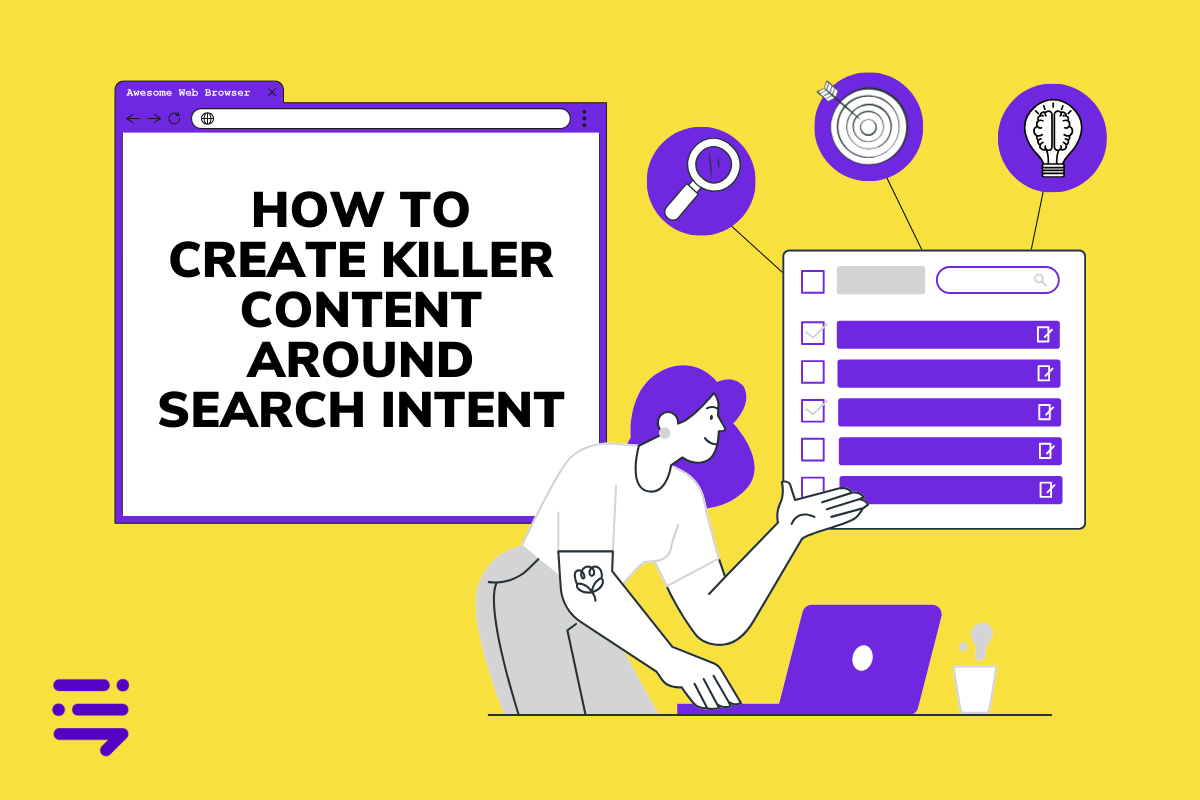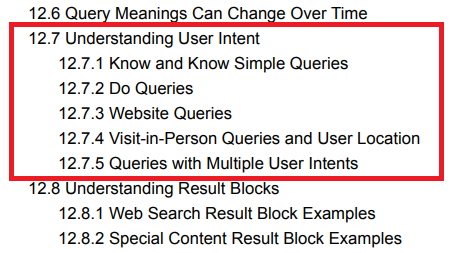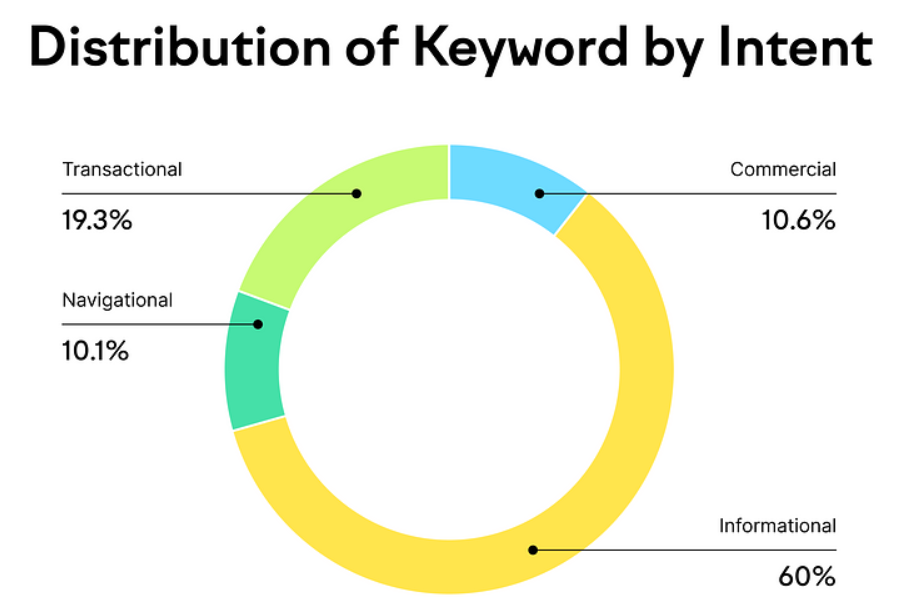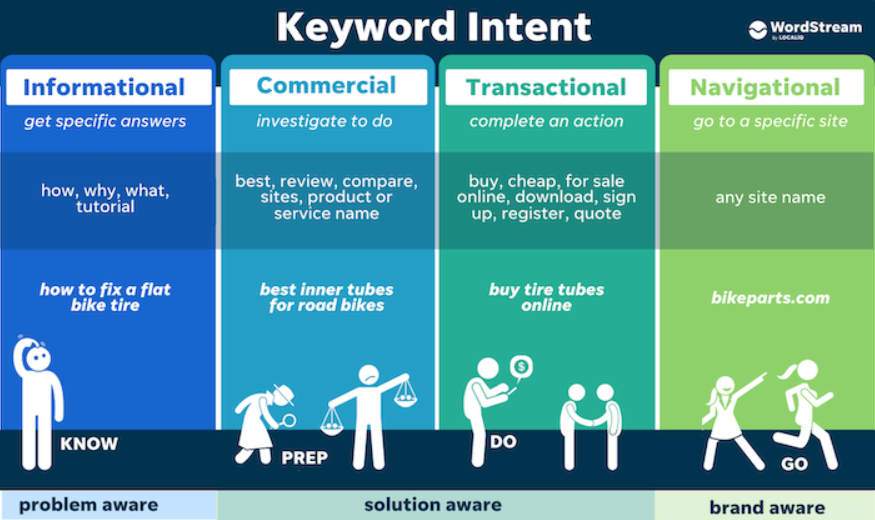Discover top guides, trends, tips and expertise from AIO Writers
What is Search Intent and How to Create Killer Content Around It
Julia McCoy
Wednesday, 20th Mar 2024
Search intent, also known as user intent, is the underlying reason why someone types a particular query into a search engine. It essentially reveals what the user is hoping to achieve with their search.
Let’s say you typed “car models” into Google. Are you looking to buy a car? Curious about different types of cars? Or do you want to go to the Ford website? That’s what we call search intent.
Nearly 99% of searches can be categorized into four search intents: informational, navigational, commercial, and transactional.
Understanding search intent is crucial for businesses that want to improve their ranking on a search engine results page (SERP) to reach their target audience. By creating content that matches search intent, they can increase their chances of appearing at the top of SERPs and attract the right kind of traffic.
How do we determine and meet search intent? Let’s find out.
Table Of Contents:
- What is Search Intent?
- Four Core Types of Search Intent
- Advanced Concepts: High-Intent and Low-Intent Keywords
- How to Determine Search Intent
- How to Create Content Based on Search Intent
- Conclusion
What is Search Intent?
Search intent refers to the motivation behind a search query. It reflects what the user is trying to find or accomplish when they type something into Google or Bing.
For example, you type “how to fix a leaky faucet” into the search field. Your intention is clearly to find information. Let’s look at Google’s response:

Here you can see a step-by-step guide, a couple of questions related to your query, and a video tutorial demonstrating how to fix a dripping double-handle faucet. Google algorithms know you’re not looking to buy a new sink but rather solve an immediate problem.
The Importance of Search Intent
Satisfying this ‘intent’ is what keeps users coming back for more. Making sure people find exactly what they’re looking for is the number one priority of Google — so much so that its entire business hinges on getting this right.
In fact, Google’s latest Quality Rater Guidelines devoted an entire section to user intent:



Digging deeper into the world of search engines shows us that matching search intent is the fuel that drives our business too — from spikes in website visitors to gaining more recognition.
Imagine crafting content blindly, without considering why someone might be typing in those keywords. It’s like shooting arrows in the dark, right?
This whole thing about search intent ties back nicely to how we create content. Whether we’re writing an informative blog post, shooting a product review video, or compiling a Top 10 list, our guiding light should be search intent. Meeting what our audience needs and wants will ultimately improve the user experience, increase engagement, generate leads, and hopefully drive sales.
Four Core Types of Search Intent
Alright, let’s dive deep into what makes our search world spin: the core types of search intent. Think of it as getting to know why people visit your online home.
Informational Intent
This is the most common type of search intent, with 60% of searches looking for in-depth resources. Hungry for knowledge, we turn to Google with questions like “Why is the sky blue?” or “How to make a perfect cup of coffee.”
This quest for information is what we call informational intent.
Navigational Intent
Ever typed in “Facebook login” or “YouTube” because you’re too lazy to type out the whole URL? Guilty as charged.
That’s navigational intent. Users already have a destination in mind; they just need help getting there.
Transactional Intent
This one’s pretty straightforward. Got your eye on those latest sneakers or looking up movie ticket prices? You’re not just browsing; you’re ready to take action and buy.
This is transactional intent, where wallets are open and decisions are made.
Commercial Intent
Lastly, we have commercial intent. You want that laptop but also don’t want buyer’s remorse hitting hard after purchase. So you go to Google and compare models and read product reviews – doing your homework before making that commitment.
Your searches will typically look like these:
- Best gaming laptops under $1000
- MacBook vs Surface Pro
- Best gaming laptops 2024
Understanding these four types of search intent – informational, navigational, transactional, and commercial – can seriously level up how you connect with visitors. And isn’t connection what it’s all about?



Advanced Concepts: High-Intent and Low-Intent Keywords
High-intent keywords are phrases that show someone is ready to take action. Maybe they want to buy, sign up, or get their hands on something pronto. Transactional and commercial keywords typically have high intent because they indicate a desire to purchase.
On the other hand, low-intent keywords are more laid-back – think window shopping online with no real urge to pull out the wallet just yet. Informational keywords are always low intent since the user’s objective is to acquire information on a given topic. They are not interested in buying something now.
Navigational keywords are generally low intent although there are cases where they can lead to action. For example, if someone searches for “Content at Scale” they are probably looking to sign up for the app.
Targeting both high-intent and low0intent keywords in your content strategy offers several benefits:
Broader Reach: Targeting high-intent keywords can lead to direct conversions. On the other hand, low-intent keywords capture users who are in the early stages of research or exploration. By targeting both types of keywords, you can reach users at different stages of the buying journey and expand your audience reach.
Diversified Traffic: Targeting a mix of high-intent and low-intent keywords diversifies your traffic sources. High-intent keywords may generate lower volumes of traffic but tend to have higher conversion rates, while low-intent keywords may drive higher volumes of traffic but have lower immediate conversion rates.
Brand Visibility: Ranking for a wide range of keywords increases your brand’s visibility in search engine results pages. Even if users aren’t ready to make a purchase immediately, they may still engage with your content, visit your website, and become familiar with your brand. This can lead to future conversions or brand loyalty.
Long-Term Growth: Low-intent keywords often target informational queries, which provide opportunities to educate and build trust with your audience. By providing valuable information and solving users’ problems, you can establish your brand as an authority in your industry over time. This can lead to increased brand awareness, organic backlinks, and sustained long-term growth.
Better SEO: Balancing high-intent and low-intent keywords in your SEO strategy can help optimize your overall performance. High-intent keywords typically have higher competition and may require more resources to rank for, while low-intent keywords may be less competitive and easier to target. By strategically allocating your resources across both types of keywords, you can maximize your ROI.


How to Determine Search Intent
Determining search intent is crucial for creating relevant and effective content or advertising strategies. Here’s how you can go about it:
Keyword Analysis
Analyze the phrases being searched. Are they informational keywords, transactional keywords, navigational keywords, or commercial keywords? This can provide insight into the user’s intent.
Keyword modifiers are words that come before or after a core term – like “best,” “reviews,” or “how to.” They can easily tell you what someone is after when they type into Google’s search bar.
For instance, adding “buy” suggests they’re ready to whip out their credit card. On the other hand, “how to” means they’re probably not there yet; they want info first.
This means that “how to tie a tie” suggests an informational intent, while “buy silk ties online” indicates a transactional intent.


SERP Analysis
Let’s say someone types in “eco-friendly water bottle” as a search term. By looking at the top results that pop up —be it product listings, informative articles, or how-to guides — you can see whether the user intends to buy right now or just gathering intel.
What types of content are ranking? Are there featured snippets, videos, images, or other content types?
If most results are shopping pages featuring products, then that’s transactional intent.
Lots of product reviews? That is commercial intent.
If it’s more about ‘Top 10 ways to …’ kind of blog posts, that’s informational intent.
Contextual Cues
Consider the context of the search. What are the demographics, geographic location, and device type of the user? These factors can influence search intent.
For example, someone searching for “pizza delivery” on a mobile device is likely looking to order food immediately.
Long-tail Keywords
Pay attention to the specifics of the search queries. Long-tail keywords often provide more context about the user’s intent compared to broader keywords.
For instance, “best budget smartphones under $500” indicates a specific intent to research and potentially purchase a smartphone within a certain price range.
User Behavior Analysis
Use analytics tools to track user behavior on your website. Look at the pages they visit, the actions they take, and the keywords that bring them to your site. This can help you understand their intent and tailor your content accordingly.
By combining these approaches, you can gain a deeper understanding of search intent and create content that meets the needs and expectations of your target audience.


How to Create Content Based on Search Intent
After you have identified your audience’s search intent, it’s time to create content to match it.
The first step in creating content is keyword research, Identify the keywords and phrases that align with the search intent you’re targeting. Use tools like Google Keyword Planner, Semrush, or Ahrefs to find relevant keywords and assess their search volume and competition.
Now let’s look at your metadata. It’s those first few lines people see in search results — title tags and meta descriptions. They need to attract clicks from users who are looking for exactly what you’re serving up.
A pro tip: tailor these snippets with intent-specific keywords.
If someone’s looking to buy, sprinkle words like ‘buy’, ‘purchase’, or even ‘sale’.
For informational searchers, go with ‘how-to’, ‘guide,’ or ask a question.
Structure the rest of your content to match the user’s intent.
For informational queries, create comprehensive guides, tutorials, or how-to articles. Optimize informational content for featured snippets by directly answering common questions. Use headers, lists, and tables to increase the likelihood of being featured in the snippet.
For transactional queries, focus on product descriptions, pricing information, and clear calls to action.
If how-tos are hot within your niche, create clear-cut tutorial videos. YouTube clips often get prime real estate.
Regardless of search intent, prioritize creating high-quality, valuable content that satisfies user needs. Ensure your content is well-written, informative, and authoritative. Use bullet points, headings, and subheadings to make your content scannable and easy to digest. Add visuals, multimedia, and interactive elements where appropriate to enhance engagement.
Finally, optimize your content for a seamless user experience across devices and platforms. Ensure fast loading times, mobile responsiveness, and easy navigation. A positive user experience can improve your search rankings and encourage readers to stay longer on your page and engage with your content.
The goal here isn’t just ranking high — it’s about being seen first AND addressing exactly what users were searching out in the first place.
Conclusion
Understanding search intent is the cornerstone of a successful content strategy in today’s digital landscape. By figuring out the underlying motivation behind user searches, you can tailor your content to meet the needs of your audience at different stages of the buying journey — whether they’re seeking information, exploring options, or making a purchase.
As we’ve explored, targeting both high-intent and low-intent keywords allows you to maximize visibility, engagement, and ultimately, conversions. It’s more than just ranking high on search engine results pages; it’s about delivering real value and relevance to users.
Ready to take your content strategy to the next level? Content at Scale can help you get there by creating top-notch content that aligns perfectly with search intent and resonates with your target audience.
Don’t just meet search intent – exceed it.

UNLOCK YOUR POTENTIAL
Long Headline that highlights Value Proposition of Lead Magnet
Grab a front row seat to our video masterclasses, interviews, case studies, tutorials, and guides.


